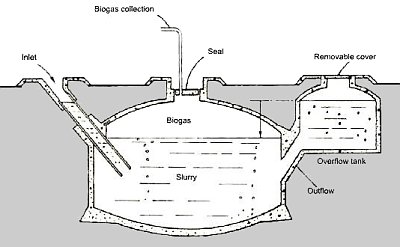This blog will analyze the relationship between agriculture, food supply, and wet waste disposal/reuse in subsistence urbanities.

Sub Saharan Africa has a population of approxinately 166 million people living in squalor and slums. These slums, despite any means of infrastructure that is commonly expected to exist in large cities, continue to grow and survive on very different means of organization from developed cities.
Harare, the capital of Zimbabwe, is one such example. In recent years it has suffered food shortages and severe hyperinflation. As a means to feed families and generate profit , the residents of Harare have turned to urban gardening. They grow produce just about anywhere they can such as backyards, vacant lots, even along the sides of the roads and on the rooftops. In 1991 approximately 8% of the land in Harare was covered in urban gardens, by 2001 this had grown to 25 %, and this percentage has steadily increased to the present day.1
This urban agriculture poses numerous benefits and surplus income to the inhabitants of the slums. It contributes to the households food needs, while any excess produce can be sold for much needed capital. In one such case, a man named Misheck Dando, who lost his job 5 years ago, turned to urban gardening as a means to feed his family. He started off growing tomatoes and onions in a small garden in his backyard. He sold the surplus to pay his childrens school fees, and despite lack of farming experience has prospered. His property now contains grains,vegetables, chickens, and rabbits and continues to provide both food and income for his family. 1

Another specific case is that of Grace Mambo, who as a result of being diagnosed with diabetes wished to eat healthier. However, healthy diets are out of normal budgetary constraints for most inhabitants of Harare. As a result, she began growing lettuce, beetroot and leaks in a neaby vacant lot.
1 Recently she quit her job to sell excess produce to restaurants and grocery stores. She has gardens strewn throughout her neighbourhood, and access to a healthy diet.
However, the urban agriculture of Harae is threatened by water shortages and access to clean water. Nearly 2/3 of the city's population relies on urban agriculture.2 The primary source of water for Harare is Lake Chivero, which due to large deposits of residential and comercial waste has been declining in both water quality and quantity. This problem has led to increased costs of clean water, as well as water rationing; wherein some areas of the city do not have access to water for periods of 2 or more days per week.3 The extra cost coupled with the lack of this precious resource can put a serious hamper on urban agriculture.

In the city of Haroonabad, Pakistan, Urban waste water is a valuable resource for agriculture, and is used for approximately 80% of crop growing. This is due to the absence and high cost of clean water, as well as waste waters proximity reliabilty, and high nutrient value. The gross income of a wastewater farmer is significantly higher than that of a clean water farmer. The crops gorwn are mainly crops that are cooked before eating, such as cauliflower, cotton, spinach, wheat, and tomatoes, minimizing any health effects for consumers.4 Waste water agriculture is a more economical alternative to in developing countries, and is also ecologically responsible as well, since it cuts the quantity of municipal and industrial waste in lakes and streams.4
If the residents of Harare were to implement the use of greywater, or possibly (although more health risks are involved for the farmers) waste water, they could cut down on the need for wet waste disposal, and would see an incrrease in their agricultural production, income, and food surplus, due to reduced water costs and better access.
1. Michelle Ajida, "Cultivating Food Security in the City," November 3, 2009,
http://www.allafrica.com/ (accessed November 3, 2009).
2. Emaculate Madungwe, "Grey Water Use: A Strategy for Water Demand in Harare?", August 3, 2007,
http://www.sciencedirect.com/ (accessed November 3, 2009).
3. "Reuse of Waste Water for Agriculture,"
http://www.iwmi.cyiar.org/ (accessed November 3, 2009)
4. William Van der Hoake, "Waste Water Use In Pakistan: the Cases of Haroonabad and Faisalabad,"
http://www.idic.ca/ (accessed November 3, 2009)























